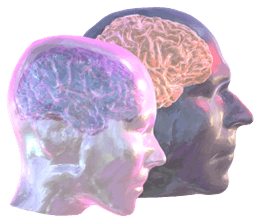VirtualBrainCloud pillars
Our Objective is to develop and validate VirtualBrainCloud, a dedicated cloud-based environment that leverages the potential of big data and high-performance computing (HPC) for personalized prevention and treatment of neurodegenerative diseases (NDD).
The methodological foundation of the project rests on three pillars: clinical expertise, computational, and biomedicine and integration.
Clinical expertise
Clinical experts in the field of NDD provide clinical data and expertise to ensure the clinical relevance of the project at all stages. Clinicians provide the consortium with high-quality multi-omics and imaging data from large dementia patient cohorts. They also provide expertise in characterization of AD and PD patients, treatment options, best practices, and prevention options. Most importantly, the major focus of ‘Clinical data & Disease progression models’ includes a comparative assessment regarding the predictive performance, robustness, precision, clinical feasibility and level of automation of existing biomarkers, laboratory tests, clinical information, conventional measures, advanced neuroimaging, machine learning classifiers and brain network models.
Computational biomedicine
Disease progression modelling develops longitudinal models of biomarker dynamics based on reference cohorts of major AD and PD studies and integrates them with existing models. The focus during disease progression modelling is the development of rigorous criteria for biomarker-driven staging, which is currently done clinically, and subtype identification. We focus on NDD as a continuum and hypothesize that cognitive staging can be accomplished using a multidimensional model based on continuous biomarkers that provide a more nuanced and detailed description of individual disease stages.
A further part of the project is to develop a novel interface that bridges the gap between systems biology and computational neuroscience by connecting the molecular scale of genes, proteins, metabolites, and other molecules with large-scale brain dynamics emerging from the concerted interaction of distributed brain areas.
Personalized brain network simulation is the third component of the computational biomedicine pillar, which is concerned with the predictive personalized simulation and recommendation of counter-measures. We will use and further develop TheVirtualBrain (TVB) large-scale brain network model component of the VirtualBrainCloud to act as a recommendation system that shows patients options to lower their personal risk to develop dementia.
Integration
Cloud – computing is key paradigm for implementation of services in the VirtualBrainCloud project. The objectives in this pillar are to evaluate and to develop workflows of data processing, standardization, FAIRification, and pipelining. The VirtualBrainCloud consortium will ensure the highest provenance and lineage tracking of data through all transformations, analyses and interpretations.
The second central methodological aspect of the integration pillar is the integration of developed prototype software into a robust and medically certifiable software that has a cloud environment-based backend and various front-ends that apply for different user groups.

